Contents
Introduction
In this review I would like to share my experiences with the Samsung 16mm F2.4 Pancake lens. The lens can be bought for a recommended price of 349€. As it’s a pancake lens it’s really small (2,4cm depth, 43mm filter thread) and lightweight (only 75g). Optical image stabilisation (OIS) is not integrated. The lens is available in black, white and pink (sic!). You can find the most important aspects of this lenses specification in the NX lens overview or in the official technical specifications.
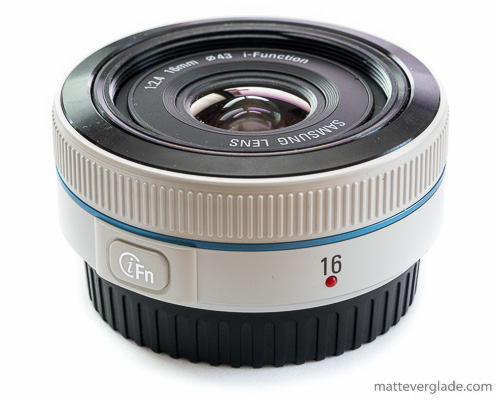
Build quality
The build quality is good. It feels pleasant in the hand and nothing is wobbling. The lens barrel mount is made using metal. I am not sure whether it’s completely metal, but it has at least a metallic coating.
Focus
The focus speed is average amongst the other Samsung NX lenses. It’s not to slow for proper operation, but neither is it really fast. I would say it’s on par with the Samsung 50-200mm F4-5.6 and Samsung 20mm F2.8 lenses. The noise emission is average, too. You can hear it in quite environments, but it’s not too awkward.
The manual focus is fly-by-wire and feels like with most other fly-by-wire lenses produced by Samsung. Unfortunately there is no AF/MF switch on the lens.
The front element of the lens is moving in and out during focussing, but the element is not rotating. This avoids problems when you are using a graduated neutral density filter or a polarising filter.
Image quality
Distortion and vignetting are automatically corrected by Lightroom based on the information Samsung delivers with their RAW files. Therefore those aspects are not evaluated in depth in this test. The RAW files show a bit of vignetting at all apertures and don’t show any noticeable distortion. Anyway other testers who have used uncorrected RAW files claim that the vignetting and barrel distortion are quite high. That’s not a surprise with this type of lens as wide angle pancake lenses tend to rely heavily on software corrections in post-processing. Be aware of the fact that the software correction can limit your ability to post-process the RAW files in Lightroom. The software correction which is applied already uses some of the reserves that you could normally gain from the RAW files. Therefore they are not available anymore for your personal post-processing.
Sharpness
Center sharpness is near to good wide open and improves till f4. f4 and f5.6 perfom best on this lens giving good results. f8 already looses a tiny bit of sharpness and at f11 diffraction kicks in.
The midframe never gets really good. Best performance is delivered between f4 and f8. f2.4, f2.8 and f11 are usable though. f16 already delivers soft results.
As with the midframe, the corners never get really sharp. Best performance is delivered between f5.6 and f11. Wide open the corners are really soft and there is some loss in contrast. f2.8 improves only a little in regard of sharpness and contrast. At f4 the contrast is much better, but sharpness hasn’t reached the decent results between f5.6 and f11. f16 has a better contrast than the corners wide open, but softness is similar.
Summary: f22 should be avoided by any means. Performance is really bad and diffraction is clearly visible in the whole photo. If corners are not too important, you can also gain good results wide open. f4 to f11 can be used for most cases, f5.6 seems to be the best aperture overall.
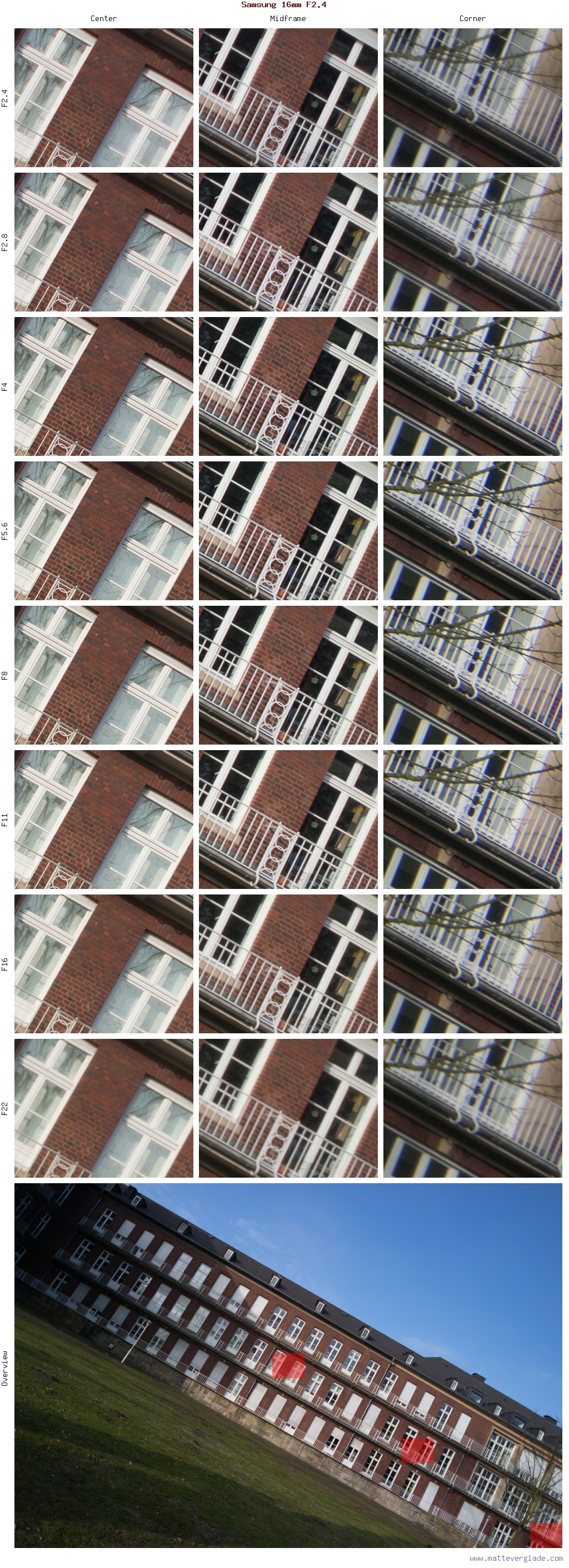
Bokeh
The circles are round at maximum aperture and are getting a slightly polygonal shape when stopped down. The general impression of the bokeh is acceptable, but I’d like it to be a bit more creamy and soft. Depending on the background it can get a bit busy, too.
Flare Resistance / Contrast
In certain circumstances the lens produces little flares. They are not very intensive though. The contrast is not reduced by much when shooting against the sun.
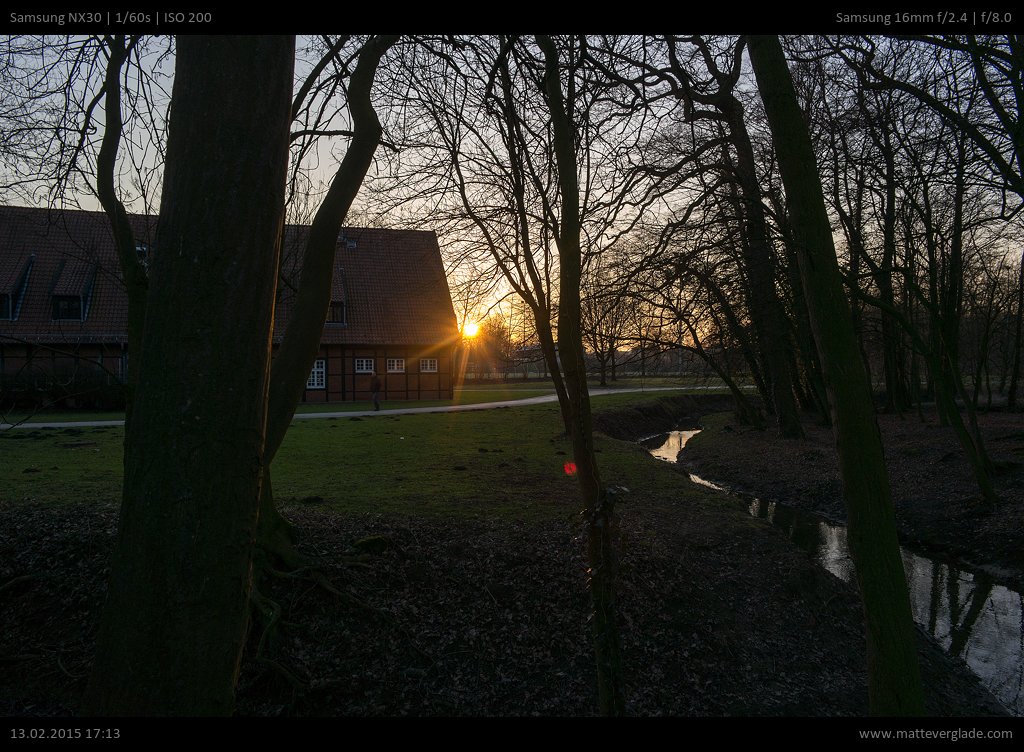
Chromatic Aberration (CA)
The lens produces CA with a size around one pixel. It is acceptable in the center and gets a bit worse towards the corners of the photo.
Alternatives
- Samsung 16-50mm F3.5-5.6 PZ: At 16mm the image quality of the fixed focal length lens is superior, especially the corners between f3.5 and f5.6. Nevertheless the zoom lens is more convenient.
- Samsung 16-50mm F2-2.8 S: Haven’t tested the image quality yet, but the expensive premium-lens is a bit faster which might be useful. Additionally you don’t need to switch lenses. If you have this S-lens, I don’t see a reason why you should buy the Samsung 16mm F2.4 Pancake lens.
- Samsung 12-24mm F4-5.6: If you don’t need a fast aperture this zoom lens gives you a better image quality and is also more flexible. It’s bigger, but also lightweight and is my personal recommendation for everyone who loves landscape photography.
- Samyang 16mm F2.0: This lens is a little faster than the Samsung lens, but has to be used fully manual (e.g. no AF). As it’s heavier and bigger I don’t see much sense to buy this lens, except maybe for slightly improved image quality.
- Samyang 12mm F2.0: This is definitely the best option for Samsung NX users if you want to do some kind of star (trail) photography. The lens has a maximum aperture of 2.0, a wider angle-of-view and (important!) features a directly coupled manual focus (but no AF).
You might also think about buying legacy wide-angle lenses. Nowadays most wide-angle lenses from previous days are more expensive than the Pancake lens itself. Another problem is that most legacy lenses were produced for full-frame cameras. Therefore they might be fish-eyes, like the Minolta MD 16mm F2.8 Fish-eye and the Konica Hexanon 16mm F2.8 Fish-eye. As a result of this I don’t recommend buying legacy wide-angle lenses for APS-C sized sensors as used in the NX cameras.
Conclusion
The lens is definitely a compromise between size and image quality. I’d say image quality is decent and it’s a nice, small and cheap option. Whether you really need this lens depends on what other lenses you own and what you want to do with it. It’s a good choice if you need the fast aperture and want to travel lightweight. Other than that there are good alternatives you could use, too.
Personally I owned this lens two times. Before the 12-24mm and 16-50mm PZ lenses were released this was the only option to get a wider angle of view. I enjoyed using it in Australia and was glad to have it with me. After I bought the 12-24mm lens and before I started to get interested in star photography, I sold the lens as there was no further need for this lens. After I started star photography and before the Samyang 12mm f2.0 was released, I bought this lens again as it was the best option for this. This lens is only used for this special purpose. Nevertheless the fly-by-wire focussing was quite annoying and therefore I replaced this lens with the Samyang 12mm F2 (see “Alternatives” for the detailed reasons).
| Positive | Negative |
|---|---|
|
|
Sample Images
You can find more images taken with this lens in my corresponding Flickr set.

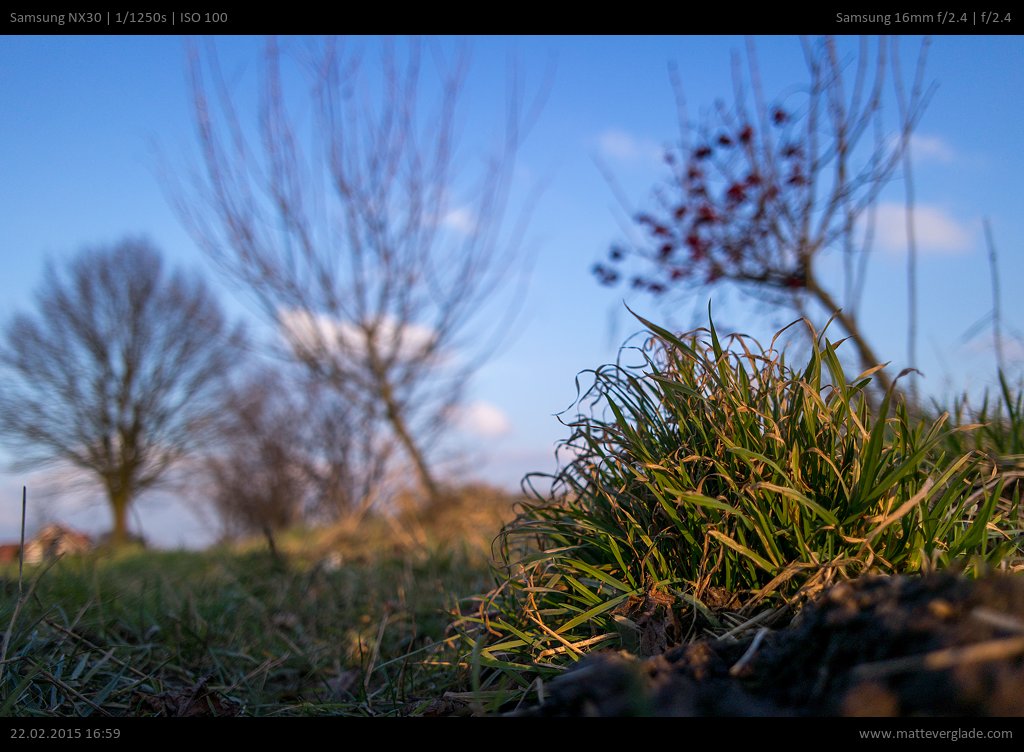
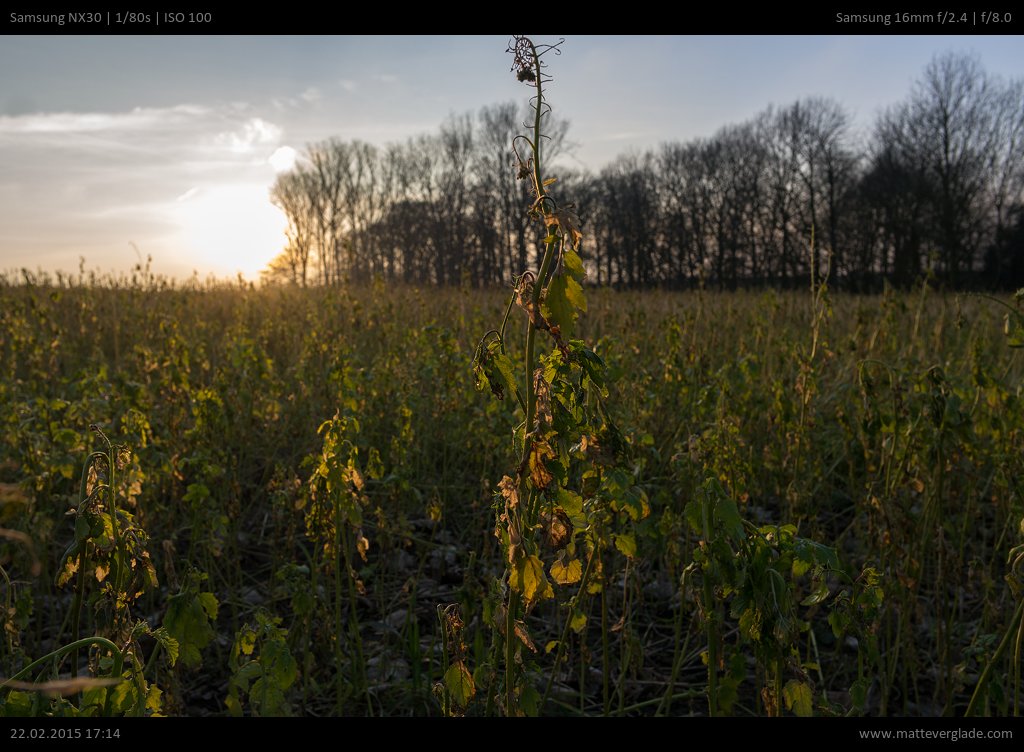
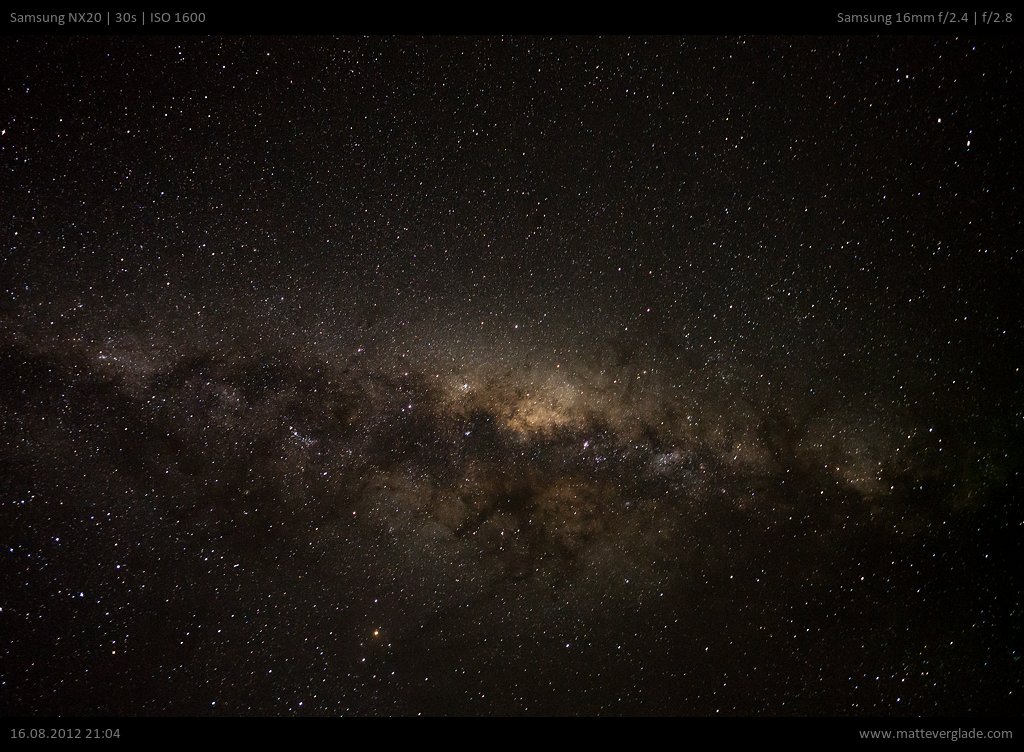
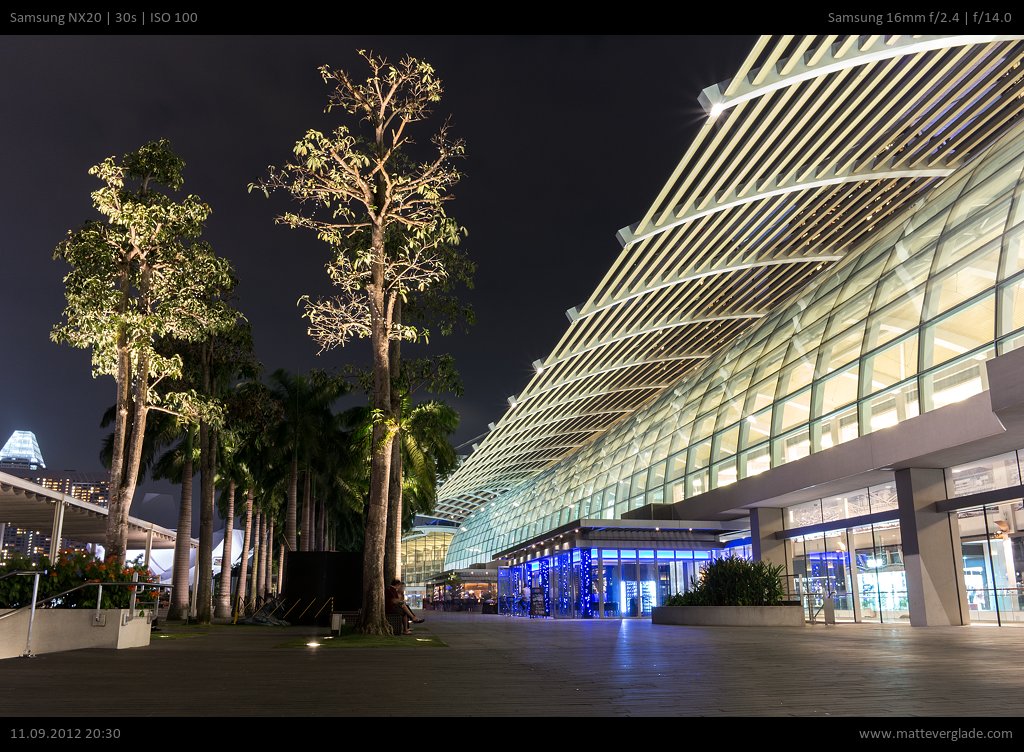
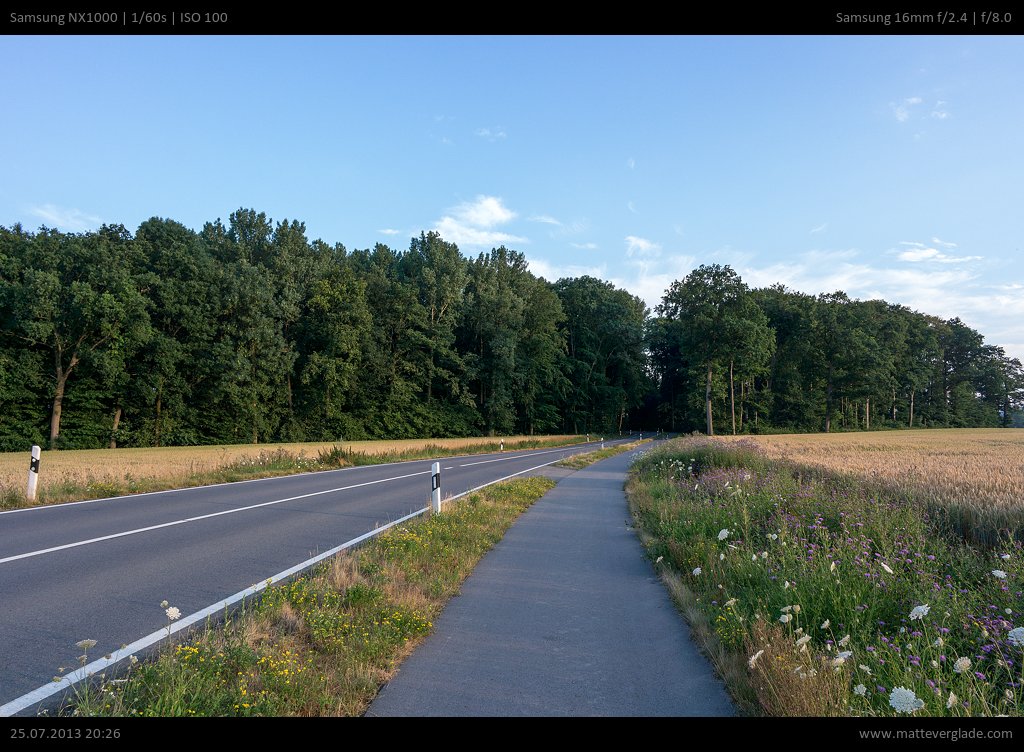
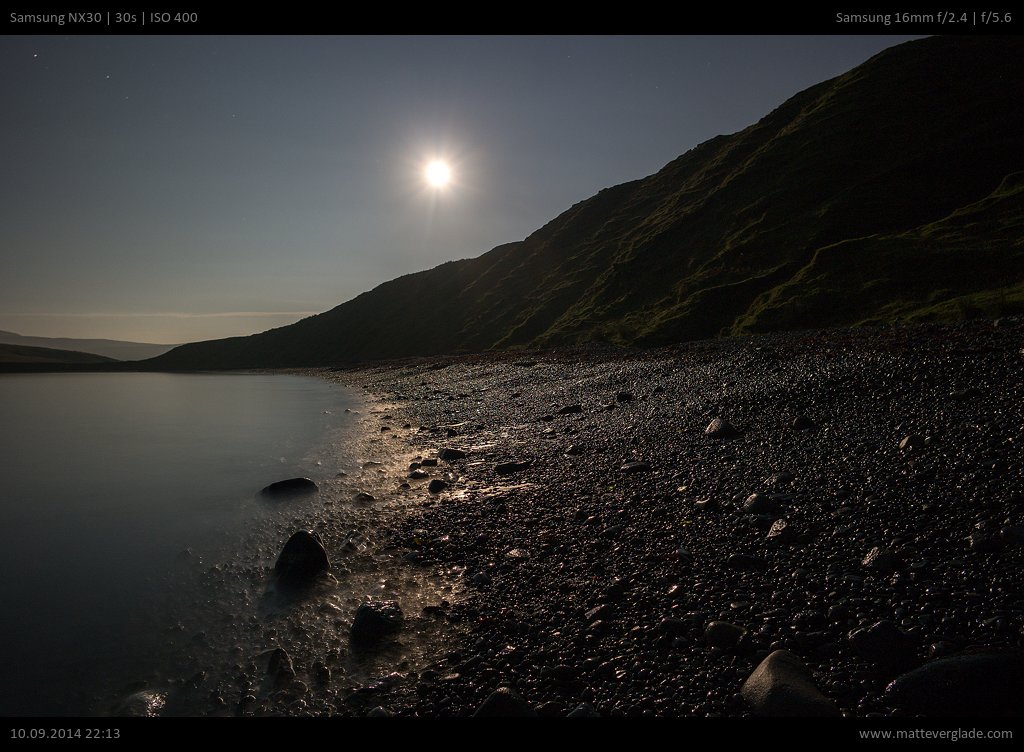
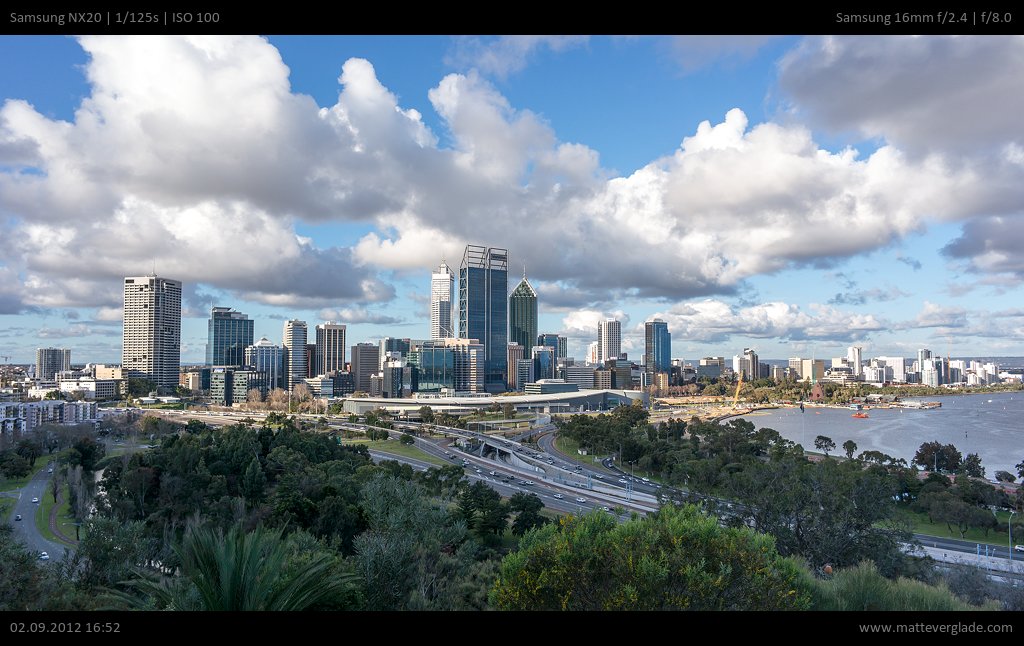
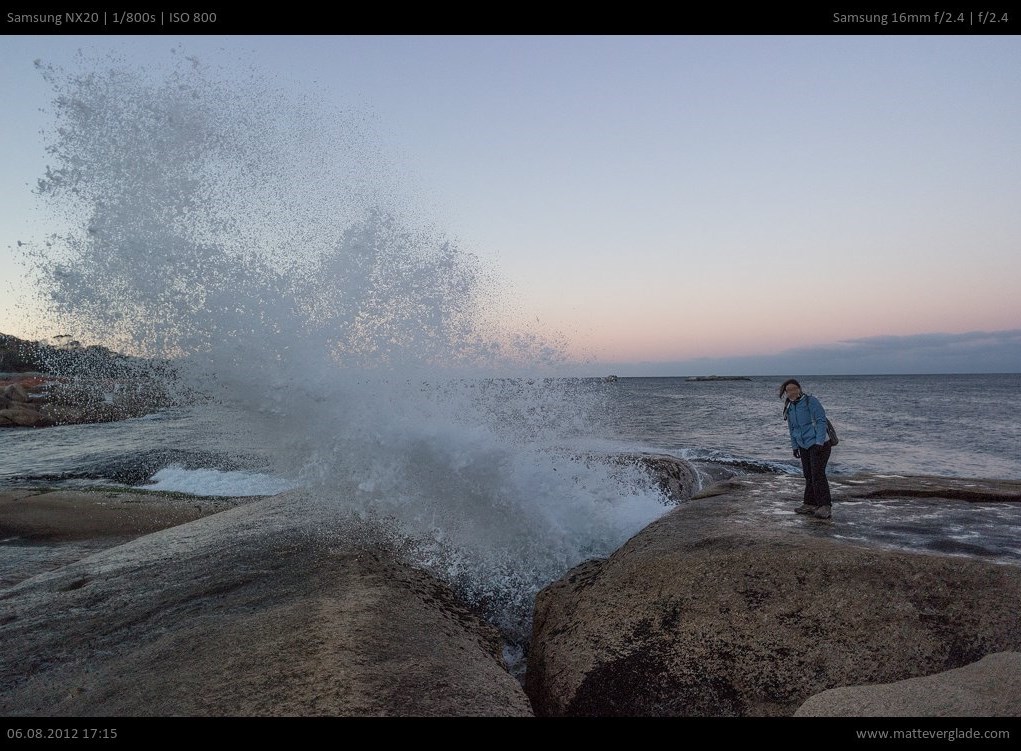
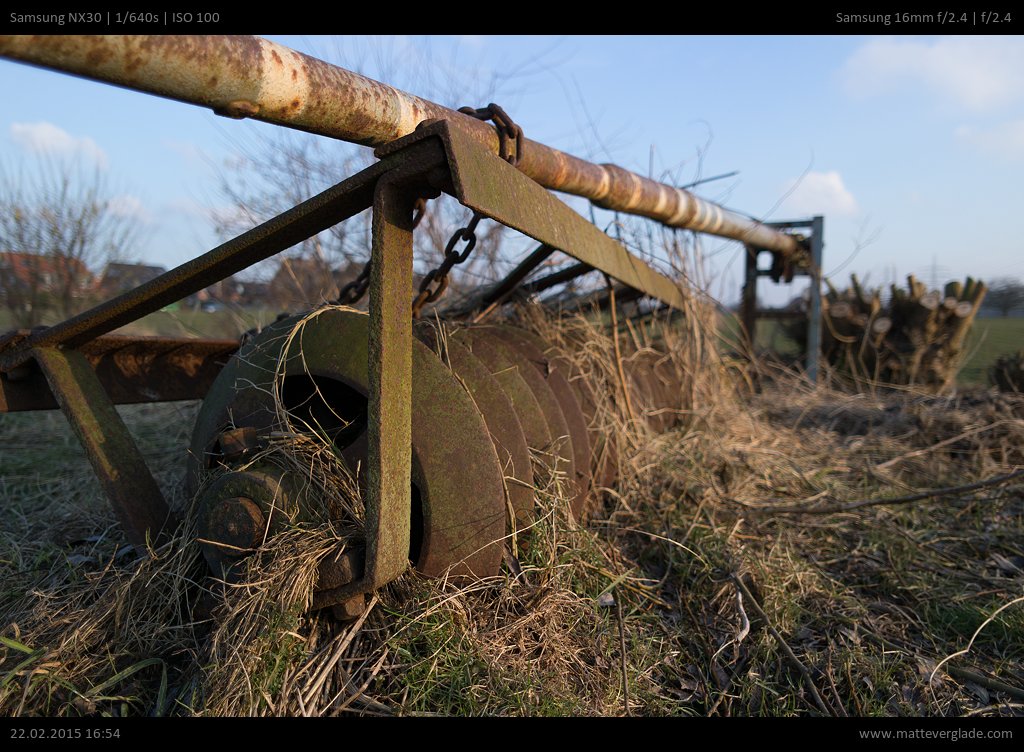
I have always found this blog when I am searching information for my NX300. I see you have updated your site, Matt, nice touch indeed. I am newbie when it comes to photography but I thing that the topic about lenses is a very complex one because one needs to buy and use in several conditions to get a better idea how they work. For example, I am wondering if perhaps the 30mm at f2 is better than this one, regardless the wideness. If you ask me, I would rather choice a bigger aperture because I am after more sharpness and light sensitivity. This is my own opinion and, of course, I do not have both lenses so I cannot compare them directly. My 300NX is good for snapshots and I need to struggle for get more “artistic” pictures. Overall, I think that the market for such a camera is middle-rage customer and if you want a little more, so you will need to either pay more for a better camera or just find your way pushing the camera to its limits. I am wondering if you do know everything about custom firmware for the 300NX in order to improve quality.
Greetings from Chile
Not very easy to answer as the lens choice depends on your personal taste and type of photos you take.
The 30mm is a bit faster and a more “universal” focal length so this might be indeed a good choice. If I can only take one lens with me to places where available light might be a problem, I am always taking the 30mm.
Actually there is no custom firmware for NX cameras so far, only some smaller “hacks”, but they do not change anything concerning the image quality.
Hi Matt,
test lenses in this mode, assuming as be representative one corner only for all, it’s incomplete and so, basically wrong.
Often, if not almost always, the lenses suffer from more or less obvious inaccuracies in the optical alignment (centering defect) and then can present IMQ differences on each of the 4 corners.
Giving a judgment by examining only one of four is definitely misleading.
In the worst cases even the 4 midframes can present significant differences and therefore also these should be tested and shown separately; this if your mission is present well-made tests, using a good-enough metodology (for the unit tested).
For the flare resistance test, the sun down, near the horizon, or half-covered by vegetation, branches, or some light clouds is another (wanted?) mistake!
It seem you don’t want test it really, seem you want that the lens doesn’t look too bad, if you show a soft test like this.
The sun must be high and the sky limpid.
If not possible, need a strong directive artificial light.
A lot of lenses have no major problems in these conditions if they are not old and veiled.
So this test say near to nothing to me, sorry.
Hi Claudio,
I agree with you that testing the sharpness of lenses with one corner only is not enough as decentration can lead to wrong results. Nevertheless all lenses I am testing (except the early test of the 18-200mm) are checked for decentration before. All my lenses are centered correctly and therefore this test is suitable and leads to correct results. I haven’t uploaded the decentration tests as they are not very interesting and too much depended on the individual lens, but I can provide them as needed.
I shot for years with the 16mm lens and had hundreds of photos with varying lighting situations including situations as you described them. I chose the photo with the worst flares which was actually the one shown here but I can also provide other photos as needed.
Your assumption that I don’t want the lens look too bad is clearly wrong! I am doing independent tests and want to show how the lenses perform in everyday practical usage. I am not connected to Samsung in any way and don’t get anything from Samsung for these tests. It’s just a hobby of myself.
Kind regards,
Matt
Interesting review Mat. The 16mm pancake was an early purchase when I got my NX500. I was drawn to the camera to see how it compared next to my Sony A6000 because I was aware Samsung had 3 pancakes and their lenses were priced very reasonably. My copy of the 16mm has really impressed me. I’ve not done the kind of tests you did above – I’m just going by the street images it has given me. It’s probably a lens that the street shooter would favor given the alternatives. I zone focus so AF speed is of little consequence.
However, I’m now starting to use it tripod mounted for landscapes so your comments re the 12-24mm zoom have got me reconsidering that lens now! I think I’ll examine the corners of this 16mm first though – with some luck I may have a better copy. That 12-24mm is quite expensive considering the cheap construction and how slow it is..
The 16mm pancake is a pretty good lens. It all depends on what you want to achieve. The 16mm and 12-24mm have both different strengths. The 16mm is faster (e.g. for astro-photography or low-light) and smaller, the 12-24mm has a very convenient focal range for landscape and delivers excellent image quality. For some time I had both lenses and I loved that, but I sold some of them for financial reasons. Nowadays NX lenses get pretty expensive, because they are getting pretty rare. It’s your decision whether it’s worth the money. 🙂
Oh, by the way, there are two versions of the 12-24mm. One is more solid than the other, which you might have heared of. Unfortunately you can’t really see which version you got, so it’s a bit of a risky deal.
Matt.. I love your site, man. It’s been my go to for everything NX related.
I have 2 Nx1’s and just purchased an NX500 + 16mm brand new for half price.
I must say I’m loving the 16mm due to it’s tiny size. The images I’m getting are adequately sharp, even wide open.
For street it’s way easier than my 12-24 or 16-50S.
Hi Matt,
I’ve owned this lens for a couple years and have no major issues with it apart from some corner softness at the edges and chromatic aberration. You mention above that the 12-24 f4-5.6 Samsung lens is sharper. My question is whether you find the 12-24 to have better edge sharpness at 16mm than the 16mm lens?
I’m looking for an optimum lens for underwater photography and edge sharpness is important for the work I’m doing. Since I’ll be using apertures of 4 and 5.6 I won’t be missing the 2.4 max aperture of the 16mm lens.
Any thoughts on this would be appreciated.
Thanks,
Lawrence